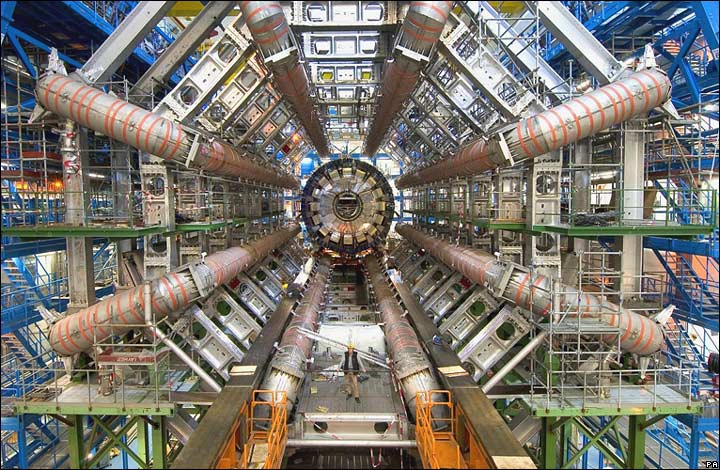By Isabel Bromfield, Second year, Mathematics
As the decade of the 2010s and all its political unrests, controversies and viral dance moves comes to an end, Epigram SciTech takes a look back at what made this decade great for science and technology.
Discovery of the Higgs Boson
In 2012, the media was flooded with stories of the discovery of the ‘God Particle’, a particle whose existence has been theorised since 1964. The Higgs Boson and its corresponding field helps describe what the mass of a particle is. When it was first theorised, no technology existed that could detect it. It was only after decades of research and four years of experiments at CERN that its detection was announced. The Higgs Boson has been hailed as one of the greatest discoveries of particle physics ever made.

Artificial intelligence and virtual assistants
Artificial intelligence (AI) has soared in popularity over the last decade. Perhaps most notable is the rise of intelligent assistants such as Siri and Alexa. Integrated into iPhones by 2011, Siri was recognised as the first digital modern assistant and represented a step forward of the integration of AI into our day-to-day lives. A complex mixture of natural language processing, pattern recognition and neural networks, Google Assistant now leads the competition. A 2018 presentation by Google Duplex has led some to speculate that the Turing Test – a test of human-like thinking – has been passed in part by this ‘AI’ in appointments it can make over the phone to human business owners.
Stem cell explosion
Cloning and stem cell research has moved a long way away from the birth of Dolly the Sheep in 1997: the success of a method for creating human stem cells from skin cells was announced in 2013. In 2014 the discovery of the potential to ‘rewind’ any cell into a stem cell using therapeutic cloning was announced. In theory, these stem cells could become almost any cell in the human body, opening up the possibility of treating diseases such as diabetes by harnessing the body’s own cells.
Gravitational waves
Gravitational waves were first predicted by Albert Einstein and, like the Higgs Boson, they had been theorised long before technology could detect them. Physical contact with these ‘ripples in spacetime’ occurred in 2015, when LIGO detected waves created by colliding black holes 1.3 billion light-years away. Their detection opens a completely new area in astronomy, which previously relied on electromagnetic radiation for its observations. They are expected to bring light to many wonders of the universe that have until now been undetectable.
Male hormonal contraceptive developed
Nearly 60 years since the first female contraceptive pill was approved, a trial of a hormonal contraceptive for men shows promising signs: the new method delivers a mixture of progestin and testosterone into the body using a gel and shows no significant side effects thus far. Though they have been in development since the 1970s, no male hormonal contraceptives have been made publicly available. Male contraceptives give men the chance to take control of their reproductive life and could have significant effects in reducing unplanned pregnancies and overpopulation.
Commercialisation of space
The so-called ‘billionaire’ space race has exploded in recent years, fuelling some of the greatest engineering breakthroughs of the decade. Companies like SpaceX have dominated; SpaceX became the first private company to launch a spacecraft into orbit and safely return it to Earth in 2010, and in 2017 made headlines with the first reuse of an orbital rocket. Elsewhere, Virgin Galactic have been trialling sub-orbital space flights in the new field of ‘space tourism’.
| Do we really need to explore the cosmos?
Quantum computing
Almost 80 years since Alan Turing birthed the first computer, humanity stands on the precipice of another technological revolution: quantum computing. These computers use quantum ‘qubits’ in place of regular bits to solve certain problems exponentially faster than classical computers. It has innumerable applications, from developing new pharmaceutical drugs to breaking encryptions that protect online transactions. Earlier this year, Google announced it had gained ‘quantum supremacy’ by completing a problem on a 54-qubit quantum computer in 200 seconds that would take a supercomputer 10,000 years. Though the technology is still a long way from being commercially viable, the surge of investment and progress made in the 2010s means this is an area to watch.
To understand what quantum computing means to the future of computer technology, all eyes are on Google. https://t.co/4Kx20Kz8Ah pic.twitter.com/az9bAApsxQ
— Tekkies (@Tekkies9) December 2, 2019
Genome editing
Genome editing has become a subject of much controversy in the last ten years. Its catalyst was CRISPR – a branch of DNA sequences with special properties that can be used to ‘edit’ genes within biological organisms. Discovered in bacteria 1987, it was not until 2012 that scientists reported the landmark discovery that CRISPR could be used to edit any piece of DNA. This has many potential uses in medical, conservational and agricultural areas: scientists could now ‘delete’ genes that cause disease, or add new ones that give special properties. Editing in humans has already begun, as controversial claims surfaced in 2018 that a pair of twins in China have been engineered to be immune to HIV.
Featured image: Flickr/ Eckhard Volker
What do you think was the decade's most impactful advance? Let us know!









